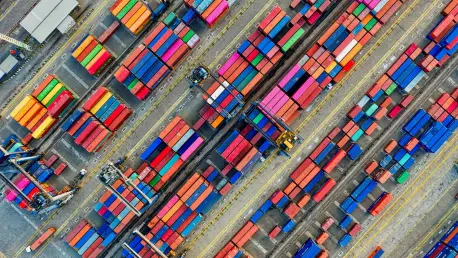In the heart of Central Asia, a transformative vision is unfolding as Uzbekistan positions itself to become a critical node in global trade networks through a groundbreaking partnership with a leading logistics giant. This ambitious endeavor centers on the development of a state-of-the-art multimodal logistics terminal near Tashkent, the nation’s capital, designed to bridge markets across continents. With strategic geographic placement and significant financial backing, the project promises to redefine supply chain dynamics in the region, potentially elevating Uzbekistan’s status as a trade powerhouse. The collaboration not only aims to streamline connectivity but also to spur economic diversification, drawing attention to the country’s untapped potential. As global trade routes evolve, this initiative could mark a turning point for Central Asia, fostering industrial growth and attracting international investment.
Strategic Partnerships Driving Transformation
Building a Logistics Powerhouse
The cornerstone of this ambitious vision lies in a joint venture between a globally renowned logistics leader and Tashkent Invest, a subsidiary of the Tashkent City Administration. Together, they are developing the Tashkent Multimodal Logistics Terminal, a sprawling facility spanning 82 hectares in the Yangi Avlod Special Industrial Zone near the capital. With an investment exceeding $288 million, the project is structured in three phases under the management of a dedicated joint venture entity. The majority stake is held by the international partner, while Tashkent Invest contributes a 15% equity share. The first phase, slated for completion between 2025 and 2027, will establish a rail terminal capable of handling 150,000 TEU annually, alongside a substantial warehouse complex. This infrastructure is poised to integrate seamlessly with national transport networks, setting a foundation for unprecedented logistics efficiency in the region and beyond.
Enhancing Regional Economic Prospects
Beyond the immediate infrastructure, this partnership signals a broader economic shift for Uzbekistan, aiming to position the country as a central logistics hub. The terminal’s strategic location offers direct access to rail, road, and air transport, creating a nexus for cargo movement that could significantly reduce logistics costs. Local authorities, including Tashkent’s mayor, have highlighted the project’s potential to boost the city’s production and export capabilities, drawing in large-scale investors. By introducing cutting-edge technologies and smart logistics solutions, the initiative is expected to enhance supply chain reliability, benefiting not only Uzbekistan but also neighboring countries. The emphasis on modern facilities, such as customs clearance zones and high-quality warehousing, underscores a commitment to creating a business-friendly environment that aligns with global trade standards, paving the way for sustained economic growth.
Infrastructure and Connectivity as Game Changers
Designing a Multimodal Marvel
At the heart of this transformative project is the design of the Tashkent Multimodal Logistics Terminal, engineered for maximum efficiency and accessibility. Located within a special industrial zone, the facility will feature a dedicated freight railway station linked to Uzbekistan’s national rail network, alongside connections to major highways and proximity to Tashkent International Airport. The terminal will offer a comprehensive range of services, including a rail-connected dry port for containers, covered cargo spaces, vehicle storage, and truck parking. Additionally, plans for extensive warehousing with cross-docking capabilities aim to streamline cargo handling. The integration of these elements is expected to create a seamless flow of goods, positioning the terminal as a critical link in connecting Central Asia to markets in the Middle East and Europe, thus enhancing trade competitiveness on a global scale.
Leveraging Location for Global Reach
The strategic placement of the terminal within a special industrial zone offers more than just logistical advantages; it provides customs and tax incentives that facilitate the integration of manufacturing, logistics, and export activities. This setup is designed to attract international businesses seeking efficient entry points into Central Asian markets. By leveraging Uzbekistan’s geographic position as a crossroads between East and West, the project aims to tap into a vast network of trade routes, supported by the global expertise of the logistics partner. The terminal’s ability to reduce transit times and improve supply chain reliability could redefine trade dynamics in the region. As the facility expands in future phases to meet growing demand, its role in fostering economic ties across continents will likely become even more pronounced, offering a model for how strategic infrastructure can drive regional prosperity.
Reflecting on Milestones Achieved
Looking back, the collaboration behind the Tashkent Multimodal Logistics Terminal marked a significant step forward in Uzbekistan’s journey toward becoming a regional trade hub. The substantial investment, paired with innovative infrastructure, laid a robust foundation for enhanced connectivity across rail, road, and air transport modes. Key achievements included the commitment to world-class facilities and the strategic vision shared by both local authorities and international partners to elevate Tashkent’s role in global trade. Reflecting on these efforts, the project stood as a testament to the power of strategic partnerships in overcoming logistical challenges. Moving forward, the focus should remain on accelerating the phased development to meet timelines, while also exploring ways to integrate sustainable practices into operations. Ensuring that the terminal adapts to evolving trade demands will be crucial, as will fostering collaborations with neighboring nations to maximize its regional impact.









